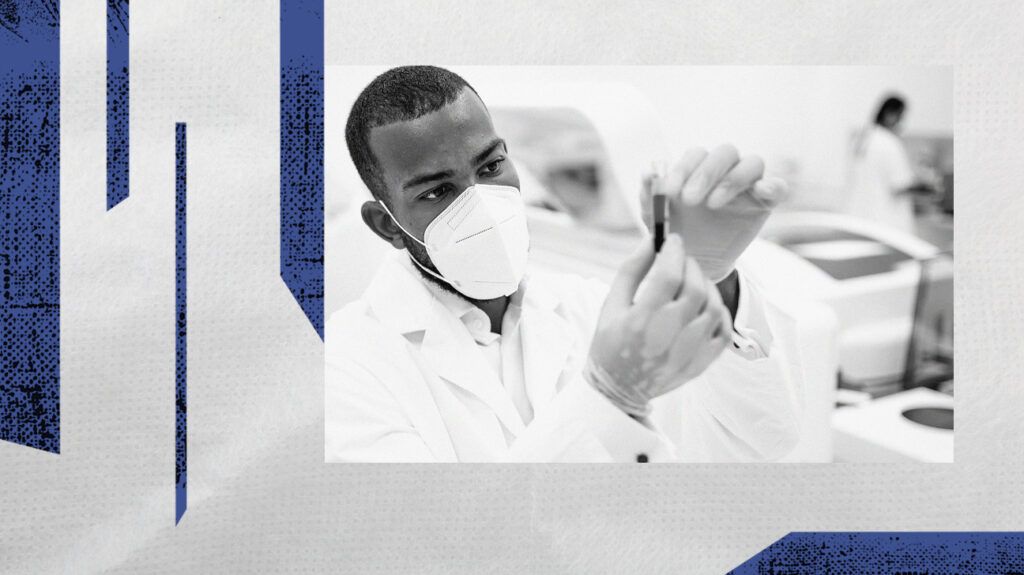Hurthle cell thyroid (HCT) cancer is a rare and aggressive form of thyroid cancer that has a tendency to spread to other parts of the body.
Due to the rarity of HCT cancer, researchers continue to debate its clinical features, treatment, and outlook.
This article reviews what the medical community knows about HCT cancer, including its causes, symptoms, diagnosis, treatment, and potential complications. We also ask whether it is possible to prevent this type of cancer and provide information on when to contact a doctor.

The exact cause of HCT cancer remains unknown. Mutations in the ATPase 6 gene
The authors of a 2021 review explain that HCT cancer is a type of follicular thyroid carcinoma. This means it affects thyroid cells called follicular cells, which release thyroid hormones.
HCT cancer starts in cells called Hurthle cells, or “oxyphilic” cells. A pathologist will label a tumor a Hurthle cell tumor if
However, HCT cancer cells are distinct from other forms of follicular thyroid carcinomas, having a unique genetic makeup and displaying different characteristics and behaviors.
Some people with HCT cancer do not have any symptoms. In these cases, doctors may discover the cancer during tests for a separate health issue.
Some people with HCT cancer notice a lump or growth in their neck.
In
After the discovery of a lump or nodule on the thyroid, doctors may order the
- Blood tests to check thyroid function: These tests assess thyroid function by measuring levels of thyroid-stimulating hormone and thyroxine in the blood.
- Ultrasound scans: These scans help doctors determine the size, shape, and texture of nodules on the thyroid.
- Fine needle aspiration (FNA): This
involves removing a sample of abnormal cells using a fine, hollow needle with a syringe attached. A pathologist then assesses the cells under a microscope to see whether they are cancerous. But an FNAdoes not help doctors distinguish between benign and malignant forms of follicular and Hurthle cell tumors. - Molecular analysis: This procedure involves identifying mutations within the cells to see whether there is a need for more aggressive treatment.
- Imaging studies: Doctors may order imaging tests, such as CT scans or MRI scans, to see whether the cancer has spread, or “metastasized,” to other parts of the body.
Below are some potential treatment options for HCT cancer.
Surgery
The
- Thyroid lobectomy: removal of one of the two lobes of the thyroid
- Total thyroidectomy: removal of the entire thyroid
According to a
Radioactive iodine
In some cases, doctors
People may need RAI therapy if they have one or more of the following:
- tumors larger than 2 centimeters
- cancer cells on the margins of the tissue biopsy, which doctors refer to as positive margins
- cancer cells in certain blood vessels
- cancer cells in the lymph nodes of the neck
- postoperative thyroglobulin levels greater than 1 nanogram per milliliter
Tyrosine kinase inhibitors
If RAI does not work or is no longer effective, doctors may suggest a type of targeted cancer drug called tyrosine kinase inhibitors (TKIs). These drugs block enzymes called tyrosine kinases, which act as chemical messengers between cancer cells. in this way, TKIs can help control the growth of cancer cells.
Examples of TKIs include lenvatinib and sorafenib.
Data supporting the use of TKIs for HCT cancer is limited due to the rarity of the disease.
HCT cancer can cause similar complications to other malignant or benign tumors of the thyroid. Complications
- vocal cords
- larynx, or “voice box”
- trachea
- esophagus
- mediastinum, which is the hollow part of the chest containing the heart and other organs
- nerves
As the tumor grows, a person may develop complications such as:
- voice changes
- breathing difficulties
- trouble swallowing
HCT cancer often spreads to other areas of the body, causing additional symptoms.
- lymph nodes
- lungs
- bones
It may not be possible for a person to prevent HCT cancer.
Radiation exposure to the neck, head, or chest
A person should consider consulting a doctor if they are concerned about thyroid cancer and have risk factors for the disease.
People should also consider seeing a doctor if they feel a lump or bump in their neck or experience any other unusual symptoms.
Due to the rarity of HCT cancer, a lump in the neck is unlikely to be a symptom of this type of cancer. A doctor can help identify the cause of a lump and work to rule out any serious conditions.
Below are some answers to frequently asked questions about HCT cancer.
What is the survival rate for Hurthle cell carcinoma?
In a
The study authors note that these figures are higher than those from previous studies and that this is likely due to advancements in diagnosing and treating HCT cancer over the last decade.
Factors that can lead to a less favorable outlook
- larger tumor size at diagnosis
- more advanced cancer stage at diagnosis
- tumor infiltration into surrounding structures
- age over
45 years - female sex
Is Hurthle cell cancer aggressive?
The authors of a
HCT cancer is a rare form of thyroid cancer. Most information about the disease comes from case studies, and controversies still exist regarding its clinical characteristics, treatment, and outlook.
The mainstay of treatment for HCT cancer is surgical removal of the tumor, which may involve removing part or all of the thyroid. A doctor may supplement the surgery with additional treatments, including RAI therapy and targeted cancer drugs such as TKIs.
Compared to other thyroid cancers, HCT cancer has a greater chance of spreading and a less favorable outlook. But advancements in HCT cancer diagnosis and treatment over the past decade have led to increased survival rates.
